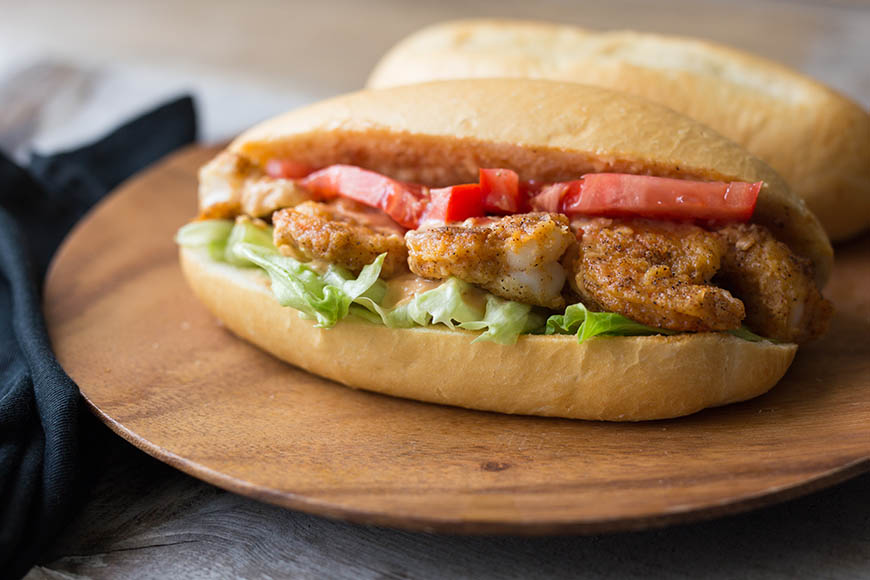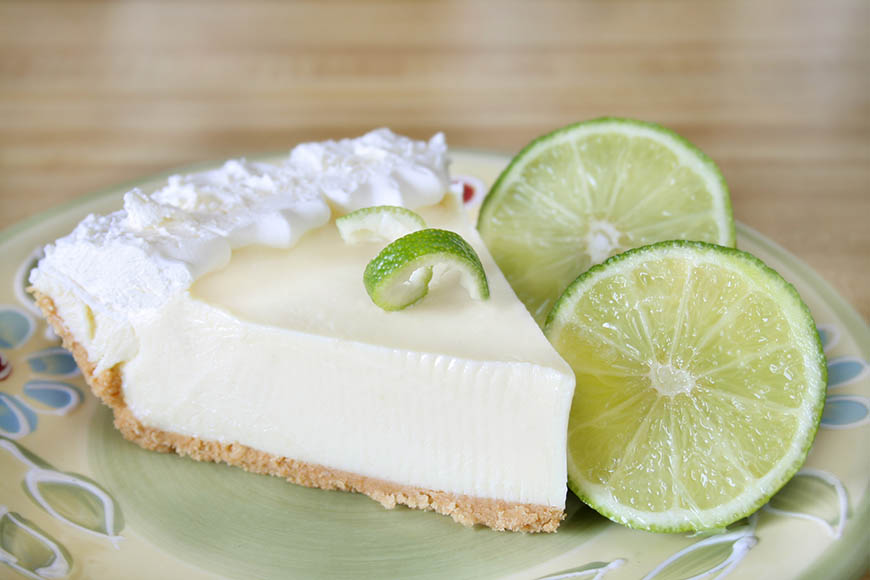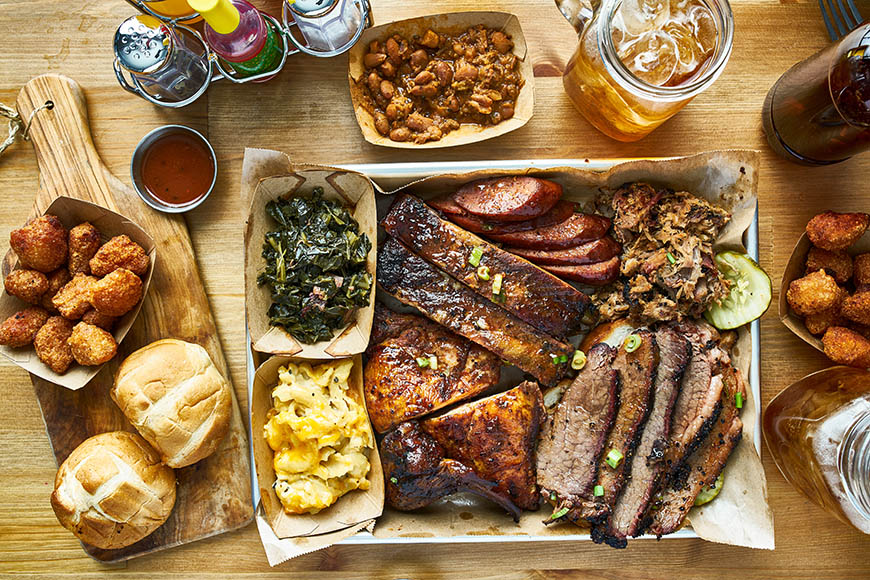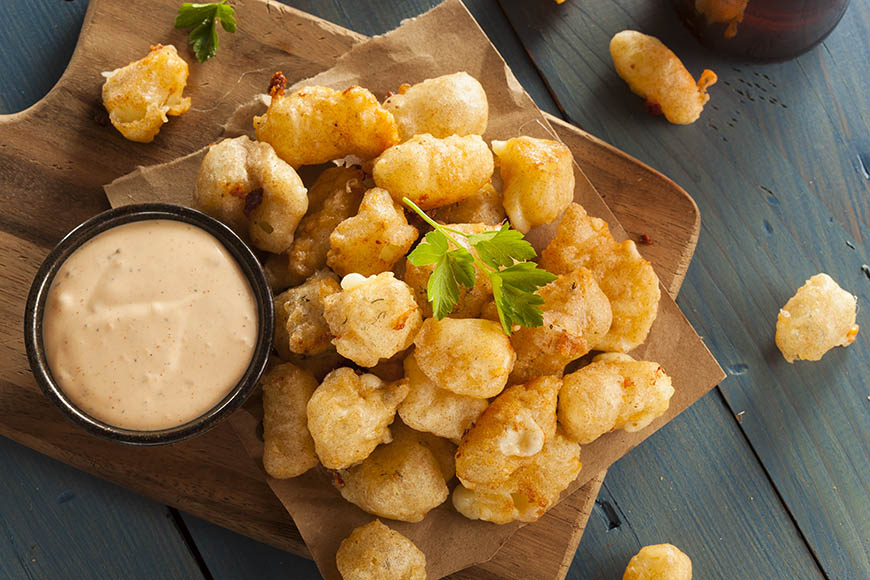The U.S. boasts an array of regional culinary creations that offer insight into the history, climate, and culture of the place. Though there are way too many to list, here are 10 different U.S. regional foods that are sure to whet your appetite, from po-boy sandwiches to key lime pie.
Sourdough Bread, San Francisco

The history of sourdough bread is closely related to the men who came to San Francisco in 1849 in pursuit of gold. These 49ers would buy bread “starters,” a fermented mixture of yeast, water, and flour, to bake fresh loaves on the trail, but discovered a sour flavor to the bread unlike anywhere else in the world. It’s because San Francisco’s climate produces wild microorganisms unique to the area, giving the bread its tangy bite. Seasoned miners even came to be known as “sourdoughs” for their time spent fermenting in the mines.
Meanwhile, a French baker by the name of Isidore Boudin struck culinary gold when he combined the sourdough starters with French baking techniques. The finished product was a loaf of bread, crusty on the outside and light and airy with a bit of a tart kick on the inside. Sourdough bread is now sold all over the city, but you can still buy it from the bakery that started it all, the Boudin Bakery.
Lobster Roll, Maine

Its origins may be a bit unclear, but there’s no denying that Maine and lobster rolls are a match made in seafood heaven. New Englanders take pride in the hefty chunks of chilled cooked lobster meat lightly tossed with mayonnaise and served on a toasted hot dog bun. Though there are many twists on the recipe, including warm butter in place of the mayo or the addition of celery and a plethora of spices, true purists prefer their lobster rolls to be pretty bare-bones.
Visitors can find this extravagant, yet humble, sandwich served at almost every restaurant in Maine, but there are a few places that bring it to new heights, including Red’s Eats in Wiscasset, Bagaduce Lunch in Brooksville, and Five Islands Lobster Co. in Georgetown, among many others.
Po-boy Sandwich, New Orleans

Though there are many competing tales of when the po-boy was created, most people believe that the sandwich came to be during the streetcar driver strike in the 1920s, when restaurant owners Clovis and Benjamin Martin invented the affordable meal to support the strike and feed the unemployed streetcar drivers. When a worker approached the rear of the restaurant to purchase a sandwich, the kitchen staff would yell out, “Here comes another poor boy!” Eventually, the name stuck.
The original po-boy was made using French bread, leftover bits of beef, and gravy, but there are many different versions today, including the popular shrimp po-boy, made with deep-fried Gulf shrimp, lettuce, tomatoes, and hot sauce. Po-boys are sold in restaurants all over the Big Easy, but it’s hard to beat Johnny’s Po-Boys, which has been serving the sandwich for more than 50 years.
Key Lime Pie, Key West

As the story goes, fresh milk wasn’t so easy to come by before the railroad came to Key West in 1912, making it difficult to create custard pies. However, the invention of Borden’s sweetened condensed milk in 1859 put desserts back on the kitchen table, and eventually led to the invention of the official state dessert for Florida. No one is quite certain who made the first Key lime pie, but there’s no denying that the combination of condensed milk, local Key lime juice, egg yolks, and sugar poured over a graham cracker crust put the Florida Keys on the food map.
Many pie lovers today are torn between pastry or graham cracker crust and whipped cream or meringue topping. Almost every restaurant on Key West offers a variation of the tangy treat, but there are a few places that are noted for making the best Key lime Pie, including Blue Heaven, Kermit’s Key West Key Lime Shoppe, and the Blond Giraffe on nearby Key Largo.
Bagels, New York City

Bagels may not have been invented in New York City, but they’re as much a part of its culture as the Empire State Building. The recipe for the doughnut-shaped rolls came to the Big Apple in the 1880s with the arrival of thousands of Eastern European Jewish immigrants. In fact, so many individual bagel shops cropped up during this time that it became necessary to establish an International Bagel Bakers Union.
The New York-style bagel is made with salt and malt, and boiled before it’s baked. The end result is a large doughy crust surrounding a fluffy and chewy interior. There’s great debate among New Yorkers on whether a fresh bagel should be toasted or not. (Try it both ways and decide for yourself.) Two of the more famous bagel spots are H&H and Ess-a-Bagel, but there are many lesser-known places waiting to be discovered.
Philly Cheese Steak, Philadelphia

The Philly cheese steak, with its long crusty roll filled to the brim with grilled, thinly sliced rib eye steak and smothered in neon orange Cheez Wiz, is as much of a Philadelphia icon as the Liberty Bell. There are several variations on the original sandwich, including provolone instead of Cheez Whiz, the addition of onions and green peppers, and thicker cuts of meat versus the shaved steak.
The mouthwatering mixture of cheese and beef was discovered in 1930 by Pat Olivieri, founder of Pat’s King of Steaks, while making hot dogs. And though there’s plenty of dispute over which of the city’s restaurants reigns supreme, Pat’s and Geno’s Steaks, located directly across the street from one another, are part of one of the greatest rivalries in food history.
Deep-Dish Pizza, Chicago

One thing is for certain about the history of Chicago pizza: In 1943, a restaurant started selling a new item under the name, “Deep Dish Pizza,” and the city’s food scene was never the same again. There is some debate over who was the genius behind the tasty variation on traditional pies, but the true identity remains a mystery. The creator may never be found, but their pizza, with layers of ingredients stacked like a casserole and finished with sauce on top, will live on forever.
The first thick pie was served in a restaurant on East Ohio Street by the name of The Pizzeria, which soon became Pizzeria Uno. The restaurant is still there today, but you can find a slice of deep-dish on almost every street corner in the Windy City.
Barbecue, North Carolina, Memphis, Kansas City, and Texas

Barbecue is serious business, and a surefire way to start a food fight is to claim that one region does it better than the next. Memphis, North Carolina, Kansas City, and Texas each represent a different style of barbecue. Memphis is known for its pulled pork shoulder slathered in a sweet tomato sauce and served with or without a bun; Kansas City revels in dry-rubbed ribs; Texas loves all things meat, from mesquite-grilled brisket to pulled pork; and North Carolina is all about the whole hog, smoked in a vinegar-based sauce.
A misconception about barbecue is that it’s dependent on grilling. In fact, most would agree that it requires a great deal of skill and time to slow roast pork or beef until the meat nearly falls off the bone, and almost every great barbecue master has a special method or technique to get it just right. This accounts for why there are so many different flavors and varieties of barbecue, and why each is tasty in its own right.
There are countless locations to sample each type of barbecue, but here are a few favorites: Central BBQ in Memphis, Jack Stack Barbecue in Kansas City, Cattleack Barbecue in Dallas, and Clyde Cooper’s in Raleigh.
Crab Cakes, Maryland

The idea behind crab cakes can be traced back to ancient times when seafood was scarce, and the best way to make the most out of the valuable commodity was by combining it with other ingredients in a patty. It’s then believed that crab cake-style recipes were brought to the U.S. by English settlers during the colonial period, when Maryland locals used crabs native to the area to make the now famous crab cakes.
Basic Maryland, or Baltimore, crab cakes are typically made using fresh lumps of blue crab, bread crumbs, Worcestershire sauce, and a few binding ingredients before being formed into a patty and fried in butter. However, there are a plethora of variations on this simple recipe found all over the state, ranging from recipes served at upscale restaurants to sandwich shops. Try Boatyard in Annapolis or Faidley Seafood in Baltimore.
Cheese Curds, Wisconsin

Since Wisconsin is fondly referred to as the Cheese State, it seemed only fitting to highlight one of its greatest culinary commodities: the cheese curd. These peanut-sized snacks are created during the cheese making process when the milk curdles and before the cheese is processed into blocks. Fresh curds are rubbery in texture, taste salty, and “squeak” when you bite them, hence the nickname “squeaky cheese.” Curds that sit out too long lose their noise and become a bit dry.
Cheese curds come in a variety of different flavors these days, including dill, jalapeno, and bacon, but it’s hard to beat the classic yellow cheddar curd. Farms, gas stations, and grocery stores all over the state sell the noisy treat, but Mars’ Cheese Castle in Kenosha is one of the more popular places to get them.
More from SmarterTravel:
- 15 International Recipes That Bring Your Travels into Your Kitchen
- 5 Foods to Avoid Before Flying
- 11 International Foods to Try Before You Die
Editor’s note: This story was originally published in 2010. It has been updated to reflect the most current information.
We hand-pick everything we recommend and select items through testing and reviews. Some products are sent to us free of charge with no incentive to offer a favorable review. We offer our unbiased opinions and do not accept compensation to review products. All items are in stock and prices are accurate at the time of publication. If you buy something through our links, we may earn a commission.
Related
Top Fares From
Today's Top Travel Deals
Brought to you by ShermansTravel
France: 8-Night Paris, Avignon & Nice...
Infinity Worldwide Vacations
 vacation
$2880+
vacation
$2880+
Poconos: 3 Nts in Garden of...
ResortsAndLodges.com
 hotel
$305+
hotel
$305+
7-Nt Canada & New England Cruise,...
Princess Cruises
 cruise
$839+
cruise
$839+




